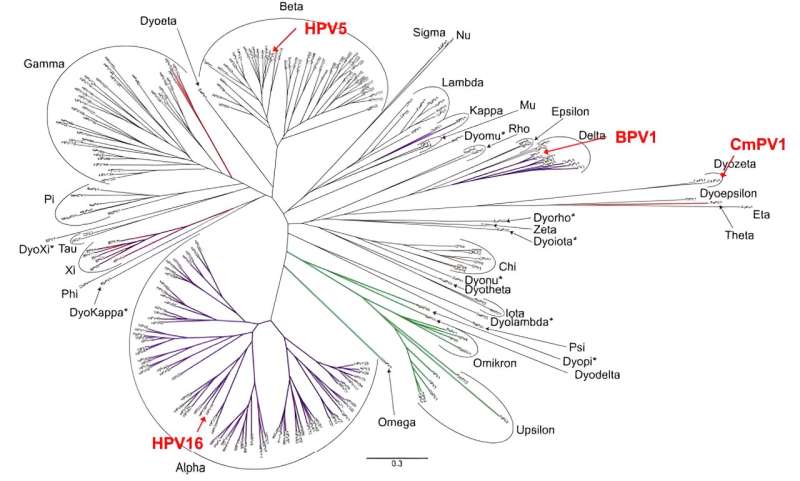This article has been reviewed according to Science X's editorial process and policies. Editors have highlighted the following attributes while ensuring the content's credibility:
fact-checked
peer-reviewed publication
proofread
HPV discovery yields breakthrough in understanding protein activity

A new study led by Yale scientists shows that the activity of a portion of a human papillomavirus (HPV) protein does not depend on its amino acid sequence or composition. This discovery challenges the widely held belief that protein function is solely determined by a specific amino acid sequence.
The study was published in the Proceedings of the National Academy of Sciences on Oct. 11.
"The beauty of science lies in its ability to surprise us," said senior author Daniel DiMaio, deputy director of Yale Cancer Center and Waldemar Von Zedtwitz professor of Genetics at Yale School of Medicine. "This study breaks the mold by revealing a case where the magic of protein activity lies not in its sequence, but in its length. These findings open up a world of possibilities for understanding protein function and possibly for designing targeted therapies for viral infections and other conditions."
The focus of the research was on the HPV L2 capsid protein, which plays a vital role in the infection process. During the entry of the virus into the cell, a segment of the L2 protein protrudes through the endosome membrane into the cell's cytoplasm, where it binds to cellular factors essential for intracellular virus trafficking to the nucleus.
The researchers discovered that removing large portions of the L2 protein resulted in the complete loss of infectivity of HPV16 pseudoviruses. This deletion prevented the protrusion of L2 into the cytoplasm, its association with crucial cellular factors, and proper virus trafficking.
Researchers were able to restore the activity of these mutated proteins by inserting protein segments with diverse sequences and compositions, including scrambled and artificial sequences and protein segments that do not adopt a fixed structure. Further studies showed that the length of the inserted protein segment, not its sequence, determined activity.
"It's an exciting discovery that upends the traditional view of how proteins function and opens up new paths for future research," DiMaio said.
More information: Changin Oh et al, Sequence-independent activity of a predicted long disordered segment of the human papillomavirus type 16 L2 capsid protein during virus entry, Proceedings of the National Academy of Sciences (2023). DOI: 10.1073/pnas.2307721120
Journal information: Proceedings of the National Academy of Sciences
Provided by Yale Cancer Center





















